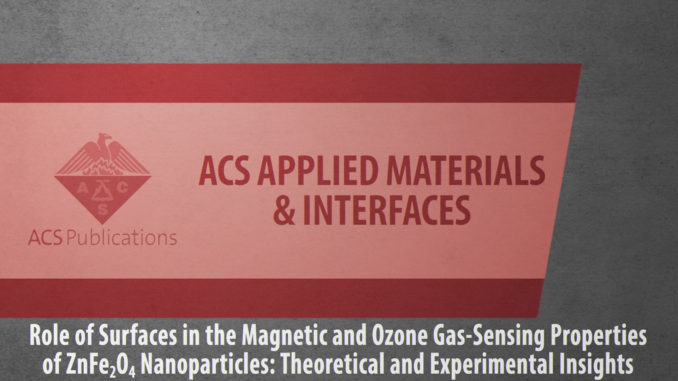
Role of Surfaces in the Magnetic and Ozone Gas-Sensing Properties of ZnFe2O4 Nanoparticles: Theoretical and Experimental Insights
Abstract: The magnetic properties and ozone (O3) gas-sensing activity of zinc ferrite (ZnFe2O4) nanoparticles (NPs) were discussed by the combination of the results acquired by experimental procedures and density functional theory simulations. The ZnFe2O4 NPs were synthesized via the microwave-assisted hydrothermal method by varying the reaction time in order to obtain ZnFe2O4 NPs with different exposed surfaces and evaluate the influence on its properties. Regardless of the reaction time employed in the synthesis, the zero-field-cooled and field-cooled magnetization measurements showed superparamagnetic ZnFe2O4 NPs with an average blocking temperature of 12 K. The (100), (110), (111), and (311) surfaces were computationally modeled, displaying the different undercoordinated surfaces. The good sensing activity of ZnFe2O4 NPs was discussed in relation to the presence of the (110) surface, which exhibited low (−0.69 eV) adsorption enthalpy, promoting reversibility and preventing the saturation of the sensor surface. Finally, the O3 gas-sensing mechanism could be explained based on the conduction changes of the ZnFe2O4 surface and the increase in the height of the electron-depletion layer upon exposure toward the target gas. The results obtained allowed us to propose a mechanism for understanding the relationship between the morphological changes and the magnetic and O3 gas-sensing properties of ZnFe2O4 NPs.
Author(s): Oliveira, R.C.; Ribeiro, R.A.P.; Cruvinel, G.H.; Amoresi, R.A.C.; Carvalho, M.H.; Oliveira, A.J.A.; Oliveira, M.C.; Lazaro, S.R.; Silva, L.F.; Catto, A.C.; Simões, A.Z.; Sambrano, J.R.; Longo, E.
CS Appl. Mater. Interfaces
Published: January 14, 2021




